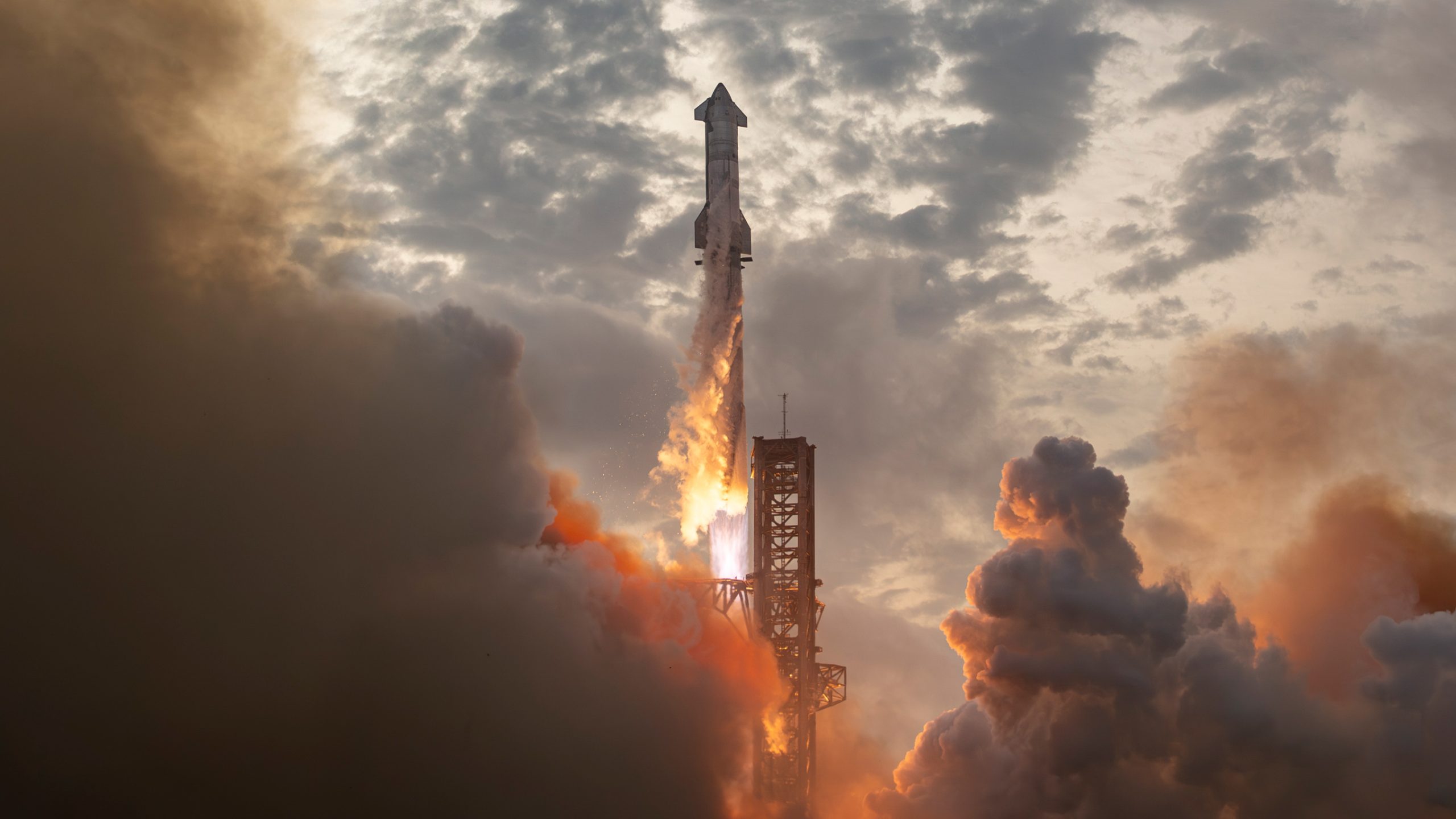SpaceX has revealed some new information regarding the third test flight of its massive Starship rocket.
The flight, which lifted off from Starbase, Texas, yesterday morning at 8:25 a.m. Central Time, built on previous test flights and accomplished a set of new goals.
All 33 of the Raptor's engines lit up in a staggered sequence, and once throttled, the world's largest rocket blasted off for a third time.
All 33 Raptor engines burn out (Credit: SpaceX)
As Starship ascended into the skies of South Texas, the 33 engines continued to operate nominally until the hot separation phase, with 30 Super Heavy engines shutting down as Starship ignited its 3 sea-level Raptor engines and 3 vacuum engines and continued into space.
For the first time, the Super Heavy first stage, Booster 10, successfully performed a boost afterburn and aimed to land directly east of the launch pad in the Gulf of Mexico. According to the data shown on the webcast, the missile reached a maximum speed of 5,750 kilometers per hour and an altitude of 106 kilometers.
Super Heavy performs a boosted background burn as the spacecraft heads into the lower range (Credit: SpaceX)
Unlike the Falcon 9, the Super Heavy is so large that it doesn't need to perform an entry burn, but in one of the last bits of data available on the webcast, it showed that the booster attempted to initiate a landing burn at an altitude of about 1 kilometer with only 3 engines lighting up and 2 It turns off almost immediately afterwards.
SpaceX has since confirmed that Booster 10 underwent a rapid, unscheduled disassembly at just 462 meters above the water's surface, and that what was left of the booster likely hit the water at nearly the speed of sound.
While Booster 10 was facing its fate in the Gulf of Mexico after a remarkable performance, Ship 28 continued to burn all six of its Raptor engines and completed its first full-duration burn, inserting itself into its proper suborbital trajectory.
The spacecraft immediately after Raptor shutdown (Credit SpaceX)
Then the ship 28 began the coasting phase and began a series of tests. The payload bay door, also known as the Pez door, designed to eventually eject full-sized Starlink satellites, was ordered to open for the first time 12 minutes into the flight. SpaceX has not yet confirmed whether it has been able to fully open/close the door. At 30:18 into the mission, the door appears to have moved to the payload bay, and we no longer have any live views inside the ship.
The next mission was to relight the first Raptor engine ever in space, but due to the vehicle's rotation rates, SpaceX decided to postpone that until a future flight.
Ship 28 then began to enter the atmosphere, but the ship appears to have gotten out of control partly due to the spin and eventually began to form plasma. Only half of the heat shield was exposed, the rest was made of stainless steel, taking the brunt of the return forces.
Ship 28 begins re-entry into the atmosphere (Credit SpaceX)
Thanks to the Starlink terminals on board, SpaceX was able to provide stunning live views from a camera on one of the Starship's panels. The plasma started out as a faint pink glow before quickly growing and enveloping the car while maintaining a good data connection that was not possible before.
Overall, SpaceX made many great advances in this third test flight and will look to complete all of these advances in the fourth test flight, including the Super Heavy booster's smooth landing and successful reentry through the Starship's atmosphere.
When do you think the fourth test flight will occur, and will the problems encountered during Flight 3 be resolved?
Questions or comments? Email me at [email protected], or tweet me @RDAnglePhoto.

“Typical beer advocate. Future teen idol. Unapologetic tv practitioner. Music trailblazer.”







More Stories
Boeing May Not Be Able to Operate Starliner Before Space Station Is Destroyed
How did black holes get so big and so fast? The answer lies in the darkness
UNC student to become youngest woman to cross space on Blue Origin